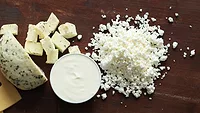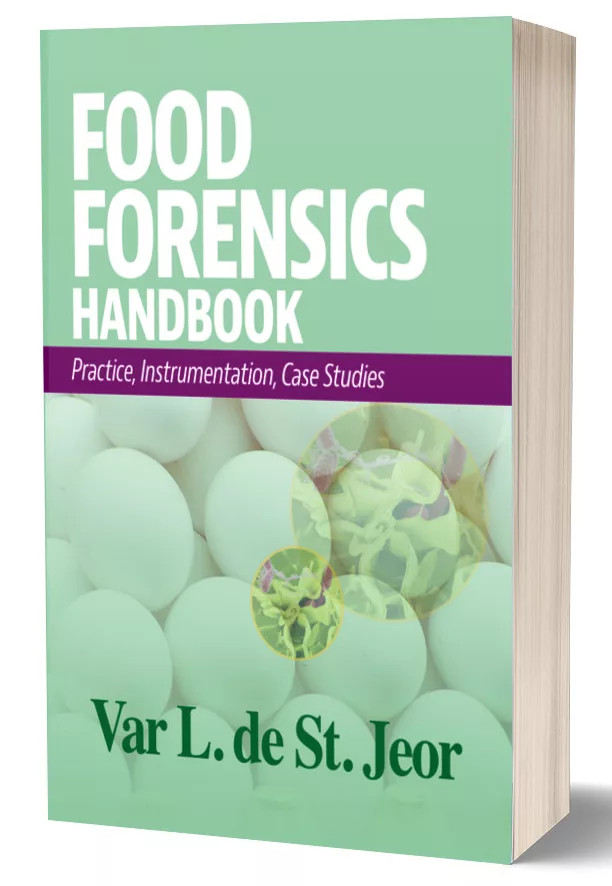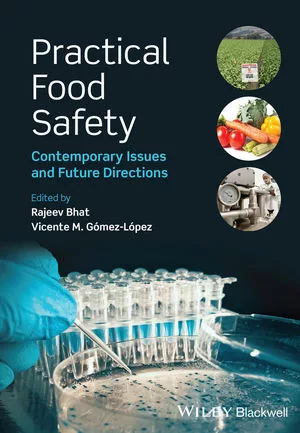L. monocytogenes Challenge Study “How To” Guidelines

Microbial challenge testing is all about validating that the controls put in place through a Hazard Analysis and Critical Control Points (HACCP) plan will actually control the hazard of concern. Challenge studies can serve several purposes. They can determine if an organism grows in a food. They can also evaluate the effectiveness of growth inhibitors to slow growth. They can be used to determine the extent of lethality, or kill, delivered by a process or treatment. Finally, they can provide data necessary to meet regulatory requirements.
The food industry, the academic community and others have conducted numerous challenge studies on Listeria monocytogenes. The specific methods used in these studies vary considerably, depending on the specific food, the purpose of the test, and other factors. It is important to recognize that no specific protocol can apply universally to all food products, storage conditions and processing or handling situations. At the same time, development of guidelines for conducting challenge studies is important to allow comparison of results and to assess the validity of data generated for control of this significant foodborne pathogen. The Food Products Association (formerly the National Food Processors Association) Microbiology and Food Safety Committee recognized this need and developed guidelines for challenge testing to validate antimicrobial and lethality treatments applicable to both U.S. Department of Agriculture (USDA) and U.S. Food and Drug Administration (FDA) regulated product.[1]
Food Microbiology Expertise
Multiple factors interact to control microbial growth and inactivation. Because of this, it is important that an expert food microbiologist is involved in designing challenge studies and interpreting results. Without extensive expertise, erroneous conclusions can be drawn. These experts consider a number of important factors that are critical to successful challenge studies, including the type and number of strains used, inoculum preparation and level, product formulation, storage conditions, and sampling and enumeration.
An experienced food microbiologist also can determine if a study needs to be done. Extensive research has demonstrated that certain intrinsic properties of food will reliably control the growth of L. monocytogenes. For example, the International Commission on Microbiological Specifications for Foods (ICMSF) evaluated hundreds of research studies and complied a listing of factors that affect growth and survival of the organism.[2] Table 1 summarizes growth limits for the organism. Products with a water activity or pH that is not within the limits of growth need not be subjected to growth studies because a vast literature demonstrates that growth will not occur.
Microbiological growth modeling may also provide a tool to assess whether or not additional testing is needed to validate the potential for growth of the organism. In many situations, products are not within well-defined limits that will control growth. When this occurs and products are intended to be stored under refrigerated conditions for extended periods of time, challenge studies are useful.
Strain Selection
There are many different strains of L. monocytogenes. Growth and survival patterns of these strains vary depending on the food and conditions studied, with some strains growing faster and other strains surviving longer under the same conditions. This variation must be considered in designing challenge studies. Ideally, use three to five strains, including some with an association with the product under study. It is important that the strains used are robust and have not lost vitality through repeated transfer. Cultures that are repeatedly transferred frequently lose resistance to environmental stress conditions.
Occasionally, high levels of background bacteria make it necessary to create a marked strain, which can be done by attaching a fluorescent label or other tag. When this is done, the strain used must be predictive of the behavior of other strains. Surrogates such as L. innocua are not appropriate for controlled laboratory challenge studies. In a laboratory setting, use the pathogen L. monocytogenes. However, in some situations, such as studies in a food processing facility, a surrogate such as L. innocua can be used when there are no other options available. When used, surrogates must demonstrate resistance greater than or equal to that of L. monocytogenes.
Inoculum Level
Once strains are selected, the next consideration is the inoculum level. The approach used for growth is generally different than that used for inactivation studies. In growth studies, it is important to avoid overwhelming competitive flora with unrealistically high inoculum levels. Typically, 100–1000 cfu/g is used; however, lower levels may be used if the level reflects what actually occurs in the food. This is important because in some situations the product may spoil before growth to a significant level may occur. Conversely, for lethality studies a high inoculum level (104-106 cfu/g) is appropriate. Use of the higher level allows the food microbiologist to evaluate the margin of safety provided by the process. Complete inactivation is not necessarily expected when using these high levels, especially when much lower initial levels are likely to be present in the product. This is an important consideration when studying post-lethality treatments.
Sample Inoculation
The next step in the process is determining how to inoculate the sample. Prepare the inoculum using conditions that are similar to those likely to be present when contamination of the product occurs. Frequently, stationary phase cells are appropriate in situations where the organism from environmental niches may contaminate product. Consideration should also be given to the site of inoculation. For example, product that is thoroughly cooked would not be expected to have L. monocytogenes in interior portions of the product. This type of product should be inoculated on the surface. However, if a cooked product is sliced, contamination could be present not only on the surface, but also in between the slices. For this type of product, inoculating between slices is appropriate.
It is essential that the inoculation method maintains the intrinsic properties of the food without creating micro environments. For example, placing a large drop of inoculum on a dry surface will create a wet region that does not have the same water activity as the surrounding product. This method of inoculation may artificially generate results that suggest growth can occur. Products with low water activities can be inoculated with cultures in a reduced water activity diluent to avoid this situation. Similar considerations should be given to other intrinsic properties, such as pH, water activity, preservatives, fat, moisture and salt levels that can control growth.
Product Selection and Growth Studies
Another source of variation related to inoculation is manufacturing variability. It is important to understand the range of pH, water activities, preservative levels and other intrinsic properties that may be encountered during normal production to select the appropriate conditions for study. It is important to study either worst-case situations or multiple levels of intrinsic properties to provide greatest confidence in the results generated. Because product formulation can change, it is important to record formula and relevant intrinsic properties to allow comparison with other studies and future evaluations.
For growth studies, sample incubation should include conditions that the product will experience during holding, distribution, use and moderate abuse. Multiple temperatures can be used if significant variation is likely to occur throughout the supply chain. Ideally, use the same packaging intended for the commercial marketplace when incubating samples. This is especially important for vacuum or modified atmosphere packaged (MAP) product. If commercial packages cannot be used for the study due to size or other limitations, the surface-to-headspace ratio must be maintained to reflect appropriate conditions throughout shelf life. If this is not done, growth may not reflect what will occur under normal conditions.
As previously mentioned, growth conditions must reflect normal and moderate abuse conditions to provide a margin of safety. Currently, shelf life expectations are not well understood by consumers and products may be consumed after the expiration date. Because of this, the duration of a growth assessment study should be 1.25 to 1.5 times the desired shelf life of the product. Two to three samples should be taken at a minimum of five to seven sampling intervals. Typically, 25 g of product are sampled but testing the entire product or a rinse is sometimes appropriate. In-clude inoculated, uninoculated and untreated samples as appropriate for the study. When all three sample types are included, the potential effects of spoil-age and other factors can be evaluated.
Lethality Studies
When conducting lethality studies, two basic approaches may be used:
1) enumeration of survivors at various times throughout treatment, and 2) enrichment for survivors. Enumeration allows for a study of inactivation kinetics, which can be very useful for predicting inactivation under a variety of treatments and conditions, but is more labor-intensive than enrichment. Enumeration results depend on the product type, anticipated injury and level expected and, due to the presence of background microflora, the enumeration approach requires the use of selective media. Marked strains will facilitate the use of non-selective media. Available selective-differential plating media offer results in 24 to 48 hours. For recovery, the sample is plated on non-selective media, incubated several hours, and then overlaid with the selective media. Lethality can be delivered through traditional heating methods or other processes such as high pressure processing or chemical treatments. It is also important to consider that antimicrobial agents can simply suppress growth or it can actually inactivate L. monocytogenes.
Lethality of a treatment is typically evaluated at the beginning of shelf life, or at the time that the lethality process is delivered. Lethality treatments may inactivate the organism, but in some situations injury may occur. It is important to consider whether an injured organism would be able to recover in the product during storage in designing the study. For example, a product may be formulated with acid or preservatives that will prevent the recovery of the organism in the food during storage because the conditions in the product are simply not favorable to the process. However, these injured cells may be able to recover on nonselective media and thus under predict the extent of lethality that would actually occur in the product.
Summary
L. monocytogenes is a significant foodborne pathogen that must be controlled for food safety. The considerations discussed illustrate the complexity of designing a challenge study that is sufficient to validate the control of L. monocytogenes in foods. The need for an experienced food microbiologist to design the studies and interpret the results cannot be overemphasized. Factors to consider include the type and number of strains; the inoculum level, preparation, and delivery; product formulation; sample incubation and delivery of a lethality treatment; length of study and frequency of sampling; and sample analysis. Those interested in designing studies are encouraged to consult additional sources for a thorough review of the subject.[1]
Katherine M.J. Swanson, Ph.D., is a recognized food safety leader with more than 20 years of food safety and quality experience. She is currently Vice President of Food Safety at Ecolab, where she provides leadership by identifying emerging food safety trends and new control strategies. Previously, she was Director of Global Product Safety for General Mills, responsible for microbiology, thermal process, toxicology, food allergen and non-food premium support worldwide. As Director of Microbiology and Food Safety for The Pillsbury Company, Katie restaged the company’s world-class HACCP program to meet regulatory requirements around the world, developed and implemented food allergen training, oversaw food quality systems audits, and developed corporate product quality management systems. Katie has received numerous awards and recognitions, including the 2003 NFPA Food Safety Award. She is a Fellow of the Institute of Food Technologists and served on the NACMCF from 1997 to 2004. She currently serves on FDA’s Science Advisory Board and the International Commission on Microbiological Specifications for Foods.
References
1. V.N. Scott, K.M.J. Swanson, T.A. Freier, W.P. Pruett, Jr., W.H. Sveum, P.A. Hall, L.A. Smoot, and D.G. Brown. 2005. Guidelines for conducting Listeria monocytogenes challenge testing of foods. Food Protection Trends (in press).
2. ICMSF. 1996. Chapter 8 Listeria monocytogenes, in Microorganisms in Foods 5. Microbiological Specifications of Food Pathogens, Blackie Academic & Professional, London.
Looking for quick answers on food safety topics?
Try Ask FSM, our new smart AI search tool.
Ask FSM →








